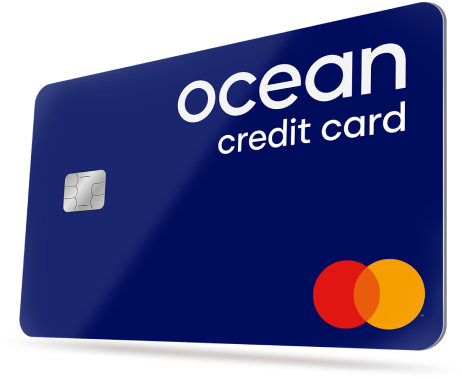Understanding credit utilisation
Credit utilisation refers to how much of your available credit you’re using compared to your total credit limit. On credit cards, this ratio demonstrates the relationship between:
- How much you’ve spent on your credit card
- How much you could spend if you used your maximum credit limit
This ratio is often expressed as a percentage and gives lenders an idea of your reliance on credit. The higher your percentage, the more likely lenders may view you as a risk because it suggests you rely heavily on borrowing.
Total credit utilisation
Your total credit utilisation is the combined percentage across all your credit cards, but it doesn’t include installment loans like personal loans or car loans.
It’s important to understand your total credit utilisation because it can significantly impact your credit score.
How do I calculate my credit utilisation ratio?
You can calculate your credit utilisation for a single credit card by dividing your outstanding balance by your credit limit.
Example:
- If your credit card limit is £2,000 and your balance is £1,000, your utilisation ratio is 50%.
- If your balance is £500, your utilisation drops to 25%.
To calculate your total credit utilisation, add up the credit limits on all your cards, then divide the total balance by the total credit limit.
Example:
- Card 1: £2,000 limit, £1,000 balance
- Card 2: £1,000 limit, £500 balance
- Total limit: £3,000
- Total balance: £1,500
- Total utilisation: 50%
What is classed as ‘good’ credit utilisation?
A good credit utilisation ratio is typically under 25%, though every lender has its own criteria.
If possible, aim to keep it as low as you can. This helps protect your credit score and makes you appear less reliant on borrowing.
Ocean Credit Card
See if it's a YES before you apply
- Up to £8,000 credit limit
- Checking won't affect your credit score
- Get a response in 60 seconds
Intelligent Lending Ltd (credit broker). Capital One is the exclusive lender.

How much of my credit limit should I use?
As a general rule, try to use less than 25% of your available credit limit. This is because a lower utilisation ratio is one of the key signs that you’re managing your borrowing well – and that can help your credit score.
Let’s say your credit card limit is £2,000:
- Keeping your balance below £500 means you’re using 25% of your limit – a level generally seen as responsible.
- If your balance climbs to £1,000, that’s 50% – which could suggest you’re becoming more reliant on credit.
- Using over 90% of your limit (e.g. £1,800 of £2,000) may significantly hurt your credit score and put lenders off.
Credit reference agencies like Experian and Equifax support this. For example:
- Experian says keeping your utilisation below 30% is ideal, but the lower, the better.
- Equifax recommends staying under 20% for the best chance of boosting your score.
Using less of your limit also means you’ll have a buffer for emergencies, and you’re less likely to rack up interest if you’re able to pay off the balance in full each month.
👉 Tip: Your credit card balance is usually reported to credit reference agencies once a month – often around your statement date – so even if you pay it off in full later, a high balance could still be recorded. Keeping spending low throughout the month helps.
How does credit utilisation affect my credit score?
Your credit score reflects how well you manage credit and affects your ability to borrow. Keeping your credit utilisation low can boost your score, while high utilisation can lower it.
- Using over 90% of your limit could drop your credit score by around 50 points.
- Keeping utilisation under 30% may boost your score by up to 90 points.
Low credit utilisation shows lenders that you’re a responsible borrower, which reduces their perception of risk.
Remember, your credit score is just one factor that lenders consider. Each lender uses their own criteria. But they will also want to see that you have a good record of paying your bills on time, every time.
Tips to manage your credit utilisation
Here are four practical ways to keep your credit utilisation under control:
- Pay down your balances. Avoid maxing out your cards and try to pay off your balance in full each month to avoid interest. At a minimum, always make your monthly payment to protect your credit history and avoid fees. If you’re struggling with debts, organisations like StepChange or Citizens Advice offer free support.
- Consider asking for a credit limit increase. If your credit limit increases and your balance stays the same, your utilisation ratio will drop. For example, raising a £1,000 limit to £3,000 while keeping a £750 balance lowers your utilisation from 75% to 25%. If not managed correctly, this could lead to further debt, so only do this if you’re confident you won’t be tempted to spend more.
- Consolidate your debts. Transferring multiple credit card balances to a debt consolidation loan can help reduce your credit utilisation ratio, as loans aren’t included in this calculation. Remember to weigh the pros and cons of a loan, including any interest or fees. Keep older credit card accounts open if they have a good repayment history, as this can help your credit score.
- Try to avoid over-applying for credit. Multiple credit applications in a short time can harm your credit score and make you appear desperate for cash. Use an eligibility checker like QuickCheck before applying to see which cards you’re likely to be accepted for. This won’t affect your credit score.
Disclaimer: We make every effort to ensure content is correct when published. Information on this website doesn't constitute financial advice, and we aren't responsible for the content of any external sites.






